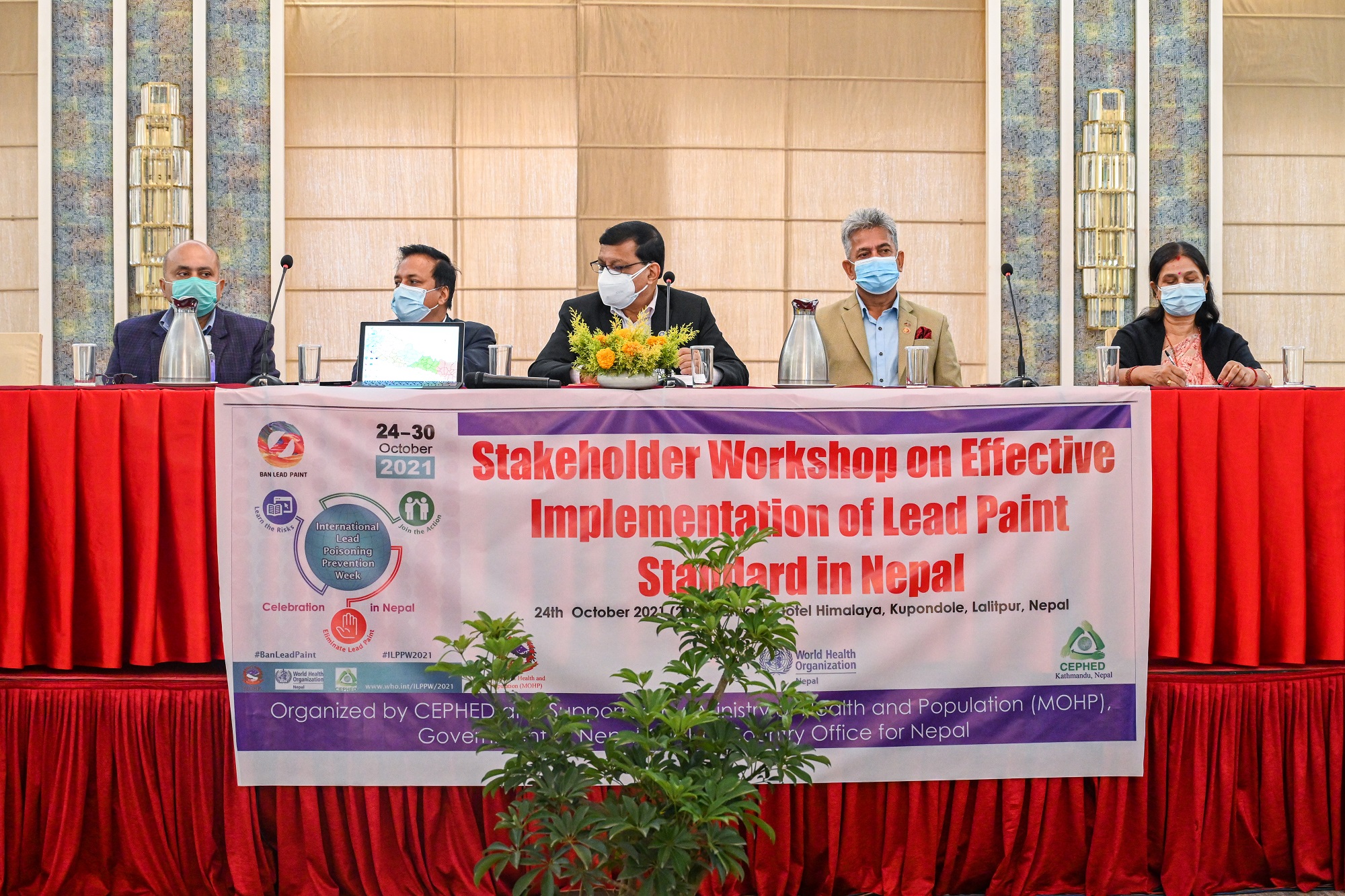At a stakeholder workshop organized with support from WHO, Country Office for Nepal, stakeholders and implementing partners from the Government of Nepal deliberated ways forward and strengthened their commitments to comply with the standard of lead in paints and reduce the risks such paints pose.
The workshop was held during the International Lead Poisoning Prevention Week commemoration which is marked every year in October with the aim to draw attention to the health impacts of lead exposure. As a member of the Global Alliance to Eliminate Lead Paint, WHO has been commemorating the week since October 2013.

A glimpse from the workshop - Stakeholder Workshop on Effective Implementation of Lead Paint Standard in Nepal; Photo Credit: WHO Nepal/A.Thapa
Representatives from the Ministry of Health and Population; Ministry of Forests and Environment; Department of Environment, Ministry of Industry, Commerce and Supplies; provincial governments; Kathmandu and Lalitpur municipalities; academia; paint industries; Federation of Nepal Cottage and Small Industries; civil societies; media; and other health and environment professionals, participated in the workshop.
WHO has identified lead as one of 10 chemicals of major public health concern needing action by Member States to protect people’s health. Even though there is wide recognition of the harmful effects of lead and many countries have taken action, exposure to lead, particularly in childhood, remains a key concern to health care providers and public health officials worldwide.
Children under six years are at high risk of suffering lifelong neurological, cognitive, and physical damage, and even death from lead poisoning. Acute lead poisoning can lead to multiple organ dysfunction mainly kidney, liver, heart, lungs, and most importantly, the brain. Chronic exposure, which is common, can be equally harmful, as neurological effects of childhood are irreversible and lifelong. Exposure to lead can also affect the child in a pregnant mother’s womb.
This year, WHO also supported to conduct compliance monitoring of standard on lead in paint in all provinces of Nepal, and the reports - Compliance monitoring of Lead paint standard in Nepal and Study of Lead in spray paints, Nepal - were published. The reports found that compliance of enacted standard has increased from 30% in 2016 to 52% in 2021. However, there remains much to be done.
Other studies have found over 64% of Nepalese children have an elevated blood lead level (>5 µg/dl) (Nepal Health Research Centre, 2015). 54% of children toys tested contained most toxic heavy metal like lead, mercury, cadmium, chromium, and bromine (Center for Public Health and Environmental Development (CEPHED), 2013); most popular snacks items like noodles tested positive for lead (CEPHED 2020); and classroom dust samples contained lead more than 10 µg/ft2 (CEPHED 2014).

A glimpse from the workshop - Stakeholder Workshop on Effective Implementation of Lead Paint Standard in Nepal; Photo Credit: WHO Nepal/A.Thapa
All these have pointed to a need for more stringent monitoring and eventually phasing out the use of lead in paints to reduce lead exposure.
“There is no such thing as a ‘safe limit’ of blood lead level, and it affects children far more adversely. The impact on their mental development, very often, is irreversible,” said Dr Rajesh Sambhajirao Pandav, WHO Representative to Nepal. “More needs to be done in protecting our health from lead poisoning which is 100% preventable.”
During the workshop, implementing partners made the following commitments:
- Update status of compliance in order to contribute towards effective implementation of lead paint standard;
- Enhance full compliance of standard and issues associated with Nepal Standard marks in paint packaging,
- Promotion of lead-free paints which will lessen high Blood Lead Level (BLL) among children;
- Increase awareness and capacity building with all levels of the government and paint industries with stakeholders.
